Let’s go touring Herod’s Palaces! Herod the Great became king of Judea in 37 BCE, thanks to a vote in the Roman Senate. He had to fight a three-year civil war to secure his position and then began his extensive building program. Herod identity as a king stems in part from his insecure accession of power; which can be seen in the continual fortification of his palaces, inconsistent with earlier Near Eastern practice. Furthermore, in his palaces, you can also see his need to project to his subjects, his personal identity as a Jewish legitimate; an issue that was called into question during his reign.
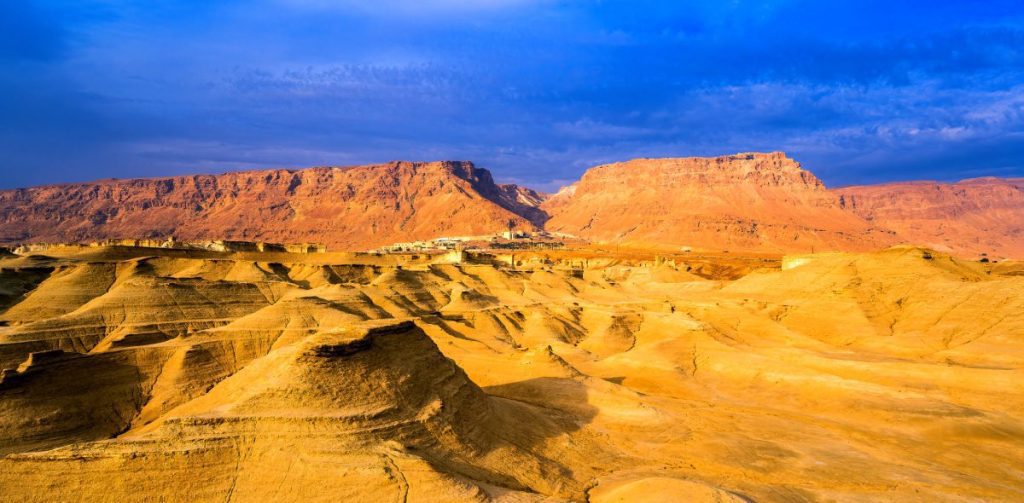
Masada, King Herod’s Winter Palace in the Judean Desert
Caesarea Maritima Herod’s Summer Palace
When you enter Caesarea National Park you can’t miss Herod’s Palace. How it is projecting towards the Mediterranean Sea, almost defying nature. But we were not the first that Herod’s palace caught our interest. In the 19th century and the early 20th century, there were multiple archaeological surveys going on. Among the different scholars that showed their interest was the Marine Architect, Alexander Flinder, who conducted a detailed survey on the grounds. He offered that the pool that is known today as a part of Herod’s palace; as a fish pool, some kind of a fish market.
During the 1970’s more excavations were done under the supervision of Ehud Netzer and Israel Levin. They were able to understand that the pool is a freshwater swimming pool, which is a part of Herod’s palace and not a fish pool. The little pottery that was found there made it difficult in the beginning to gather. So at first, it was published just as the Promontory Palace.
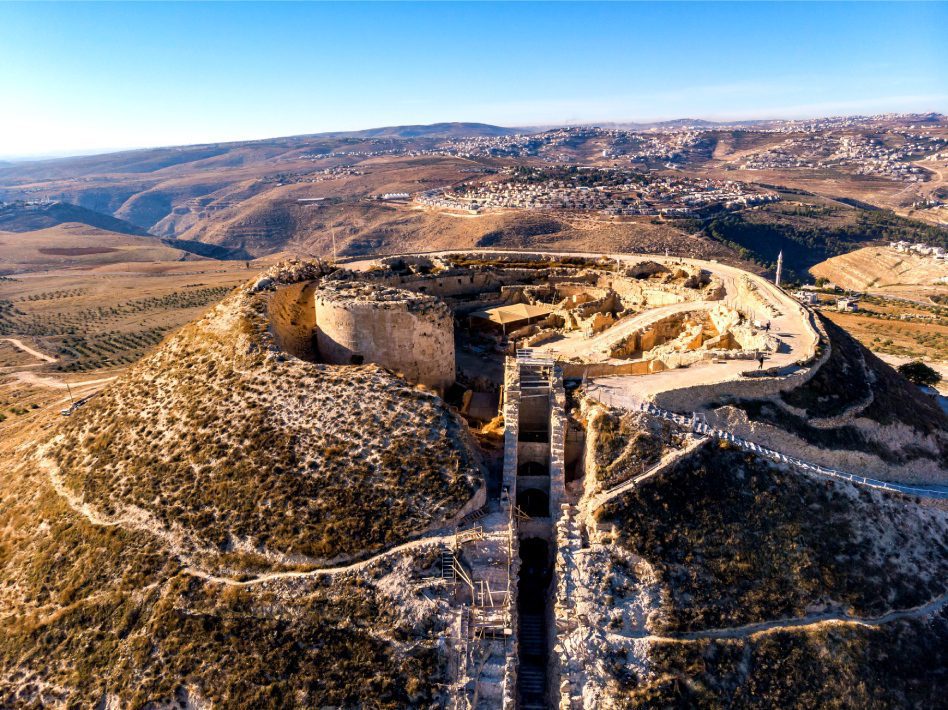
Herodion, Herod’s Palace next to Jerusalem
Netzer returned to the site in 1990 and brought it a new American team led by Barbara Burrell, Kathryn L. Gleason under the auspices of the University of Pennsylvania. Its members were mainly student volunteers; though in 1992 they were joined by a contingent of Israeli workers, most of them new immigrants from Russia.
The Pool At the Palace
The centerpiece and the most obvious relic of Herod’s Palace is its great central pool. Nearly Olympic size, it measures 115 feet long and 59 feet wide, and at least 8 feet deep. A square pedestal, probably for statuary, stands in its center. Water channels that lead into it from the shore indicate that the pool. Once it has been filled with fresh water from inland sources. Even Though the salt spray of the sea tossed all around it.
On the three sides surrounded by the sea, it was enclosed by colonnades. Rectangular cuttings between the columns may have held flower boxes, adding to the contradictory impression of a garden in the midst of the Mediterranean. Looking out over the pool from the east was a dining room whose floor was a multicolored mosaic; composed of small square tesserae, its design imitates the Roman opus sectile flooring of geometric shapes sawn from rare stone. Above it may have been a vaulted ceiling, and in the back wall, an apse was filled with a semicircular fountain, which would have set off the place of the host during dinner parties. This main room was flanked by two side rooms of lesser pretensions, with black-bordered white mosaic floors containing less elaborate central panels.
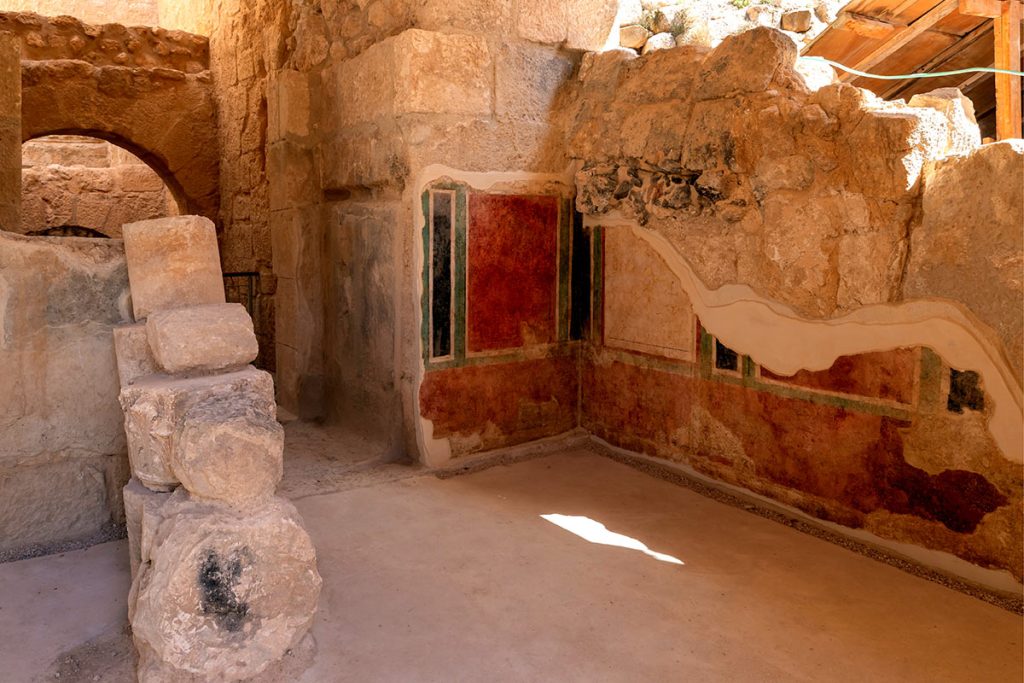
Frescos in Roman Style Found at in Herod’s Palaces Like Herodion
Why bother constructing Such a pool just next to the waterfront? Firstly, the Mediterranean Sea could be quite warm at some point during the summer. And what better refreshing than a freshwater pool. Also bear in mind that swimming; or better said lifeguard services were not as evolved as today. So jumping into the Sea for a short swim in turbulent water and strong underwater currents was not something that you did.
Some Discrepancies Between Josephus and the Finds in the Field
Behind these main rooms was a series of smaller rooms. In particular two rooms were the size of modern-day pantries or closets, floored with a black-bordered white mosaic similar to that of the rooms on either side of the large dining room. Contrary to Josephus’ description, the walls were of local sandstone but were plastered and painted to give the polished effect of finer stone. Fragments of casseroles, storage pots, and whole amphorae were abundant in the fill of these two rooms.
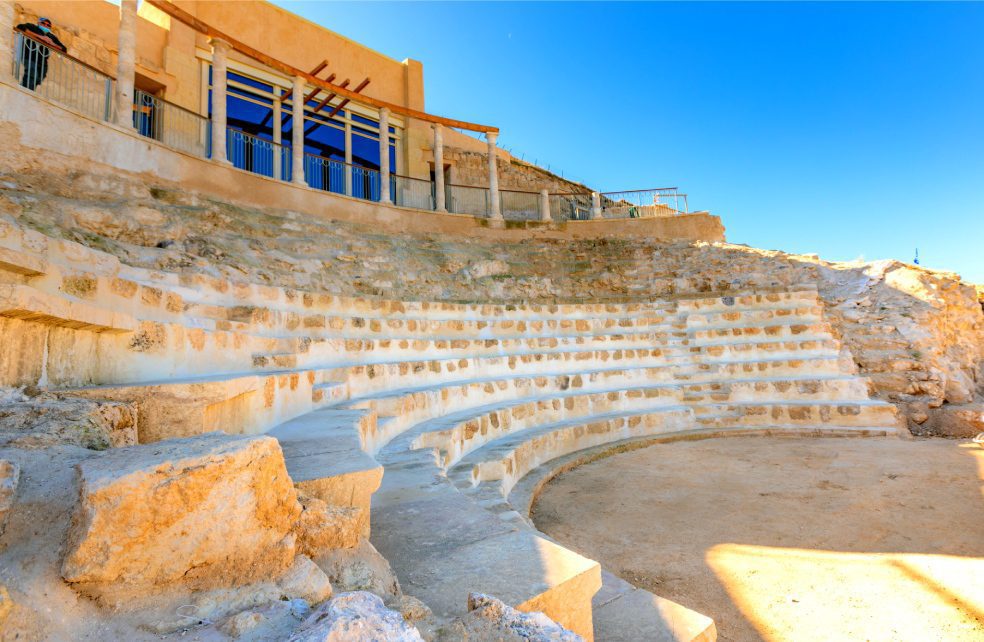
The Theatre at Herodium (Herodion)
Originally they had been designed on a grander scale, but later modifications made the rooms smaller and perhaps more functional. Spaces within them were blocked off and their broad doorways narrowed. It is possible that they were last used as service rooms. One edge revealed traces of an earlier and more luxurious marble floor, replaced by the mosaic. The many fragments of multicolored painted plaster also showed that some of the palace’s walls had originally been red and then were repainted plain white.
Touring Herod’s Palaces: the Dating of the Palace
So let’s talk some more about this renovation. The date of the palace as a whole was evident just to the north of the service rooms. Here an early staircase had been replaced. The remodelers had stripped it of its facing of fine stone, leaving only rough foundation stones; they also took the flooring blocks from the landing at its base. When they dug in the area of those removed blocks in 1992, they found a cache of fine red-ware pottery and unbroken lamps that have been preliminarily dated till late in Herod’s reign or early in the reign of his successors. This early date for the palace’s first renovation is our best evidence yet that the palace was built as early as 22–10/9 B.C.E., along with the rest of Herod’s Caesarea.
A Roman Caldarium Found at the Palace
In the area just south of the service rooms was a hot room (caldarium) for a Roman-style bath. Its floor was raised on round columns of brick to form a hypocaust, or under-floor heating system, with its furnace on the east side. Within the soft, silty deposit of the furnace for the caldarium were hundreds of artifacts. Careful sifting produced fragments of glass vessels, windowpane, two bronze rings and the rim of a bronze vessel, faience, ceramic oil lamps, some unbroken bowls, and remarkable fine ware pottery. Many were imported types not normally found at archaeological sites in Israel.
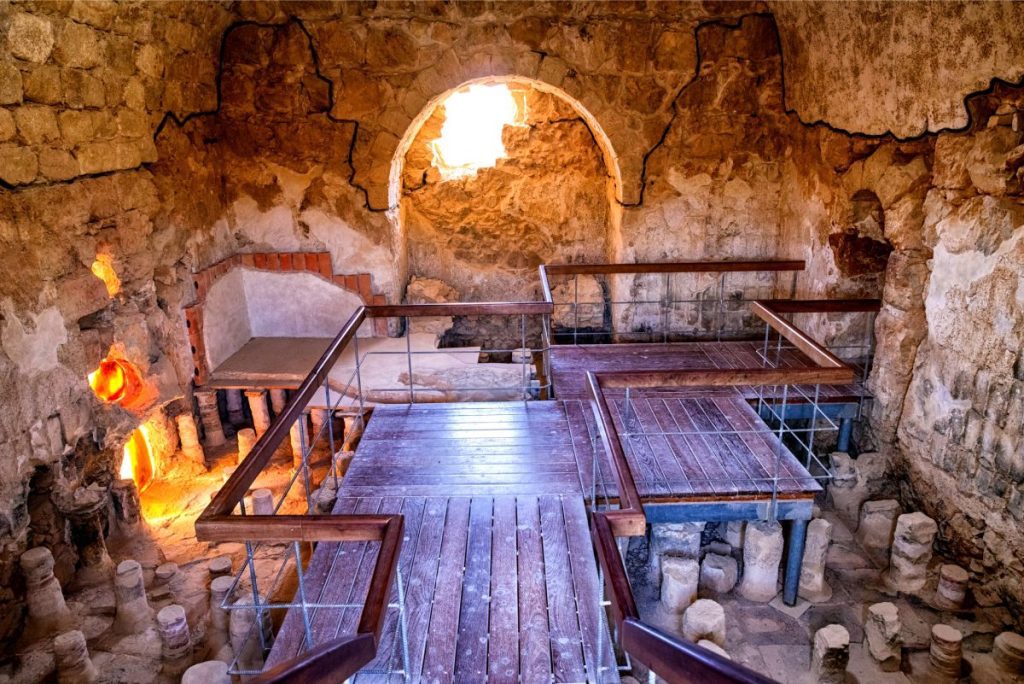
The Roman Baths at Masada
Herod’s Winter Palace in Jericho
Near the ancient Roman road leading to the Dead Sea, there are two tels that stand out. These are the locations of a complex of palaces dated to the Second Temple Period. From the Hasmonean Period and until Herod the Great. The palaces were a few hours away from Jerusalem, just about 20 km distance. But was the perfect escape for the kings of Judea in the winter. Jerusalem in the winter could be even covered with a thin layer of snow. But once dropping 1300 ft. under sea level the temperature becomes much milder. So Jericho was ideal for the winter months.
First Excavations in the 19th Century
The very first archaeologist to excavate the site already in the 19th was Charles Warren in 1868. Warren became “legendary” due to excavations in the area of Temple Mt, Jerusalem. During the excavations at Jericho, he dug in nine different archaeological tels trying to find biblical Jericho from the times of Joshua. Further excavations were made between 1907-1909 by the german archaeologists Carl Watzinger and Ernst Sellin. But these two, together with the team they headed were putting their efforts unearthing the most ancient tel at Jericho – Tel es-Sultan. The location of Jericho when Joshua according to the Bible conquered Jericho.
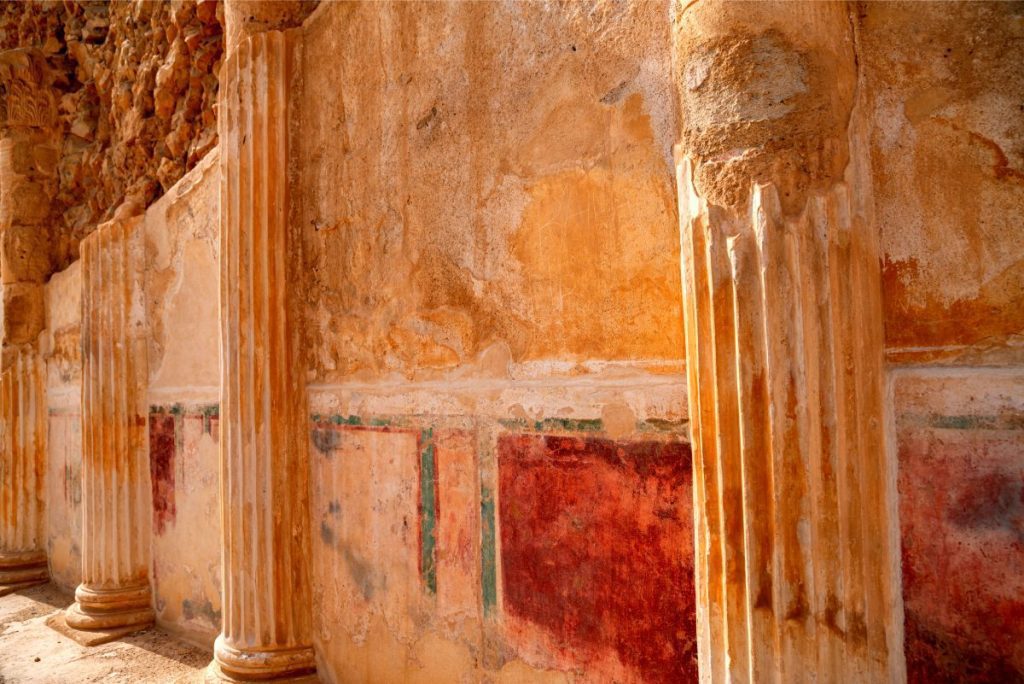
An Intresting Detail of the Lower Palace at Masada Reveals the Secrets of How Masada was Concstructed
The excavations on those the two Tells that are next to Wadi Qelt were renewed in 1950 by an American team; the American James Leon Kelso and Dimitri Baramki. And in the following year joined James B. Pritchard to the team. The American team unearthed remains of monumental buildings south of Wadi Qelt; all of them from the time of Herod the Great. The monumental scale of the buildings, colonnades, and gardens discovered during these excavations led the archaeologists to identify the site as the civic center of the New Testament Jericho.
Ehud Netzer – the Archaeologist Unearthing Herodian Jericho
The most extensive research was conducted by Ehud Netzer in 1973 on behalf of the Hebrew University in Jerusalem. Netzer the world’s famous expert on the building program of Herod the Great was able to discover a great deal of the sites. The excavations conducted here by Netzer were a highlight in his career. So far the identification of the Hasmonean palace complex in Jericho is the first and so far the only proven remains left by the dynasty to which Herod was the successor.
After conscientious excavations lasting for 13 years, a large portion of the site was discovered. Revealing palatial pavilions, swimming pools, and the water systems and infrastructure for the royal agricultural estate. He also documented three distinct palace structures built by Herod. Each is more luxurious than the last. Culminating in the Third Palace or “opus reticulatum” Palace straddling the Wadi Qelt. In 1976 he extended his excavations to Tel es-Samart near Jericho, the site of Herod’s unique spectacle building. Which he identified as a combination of hippodrome; theatre and gymnasium.
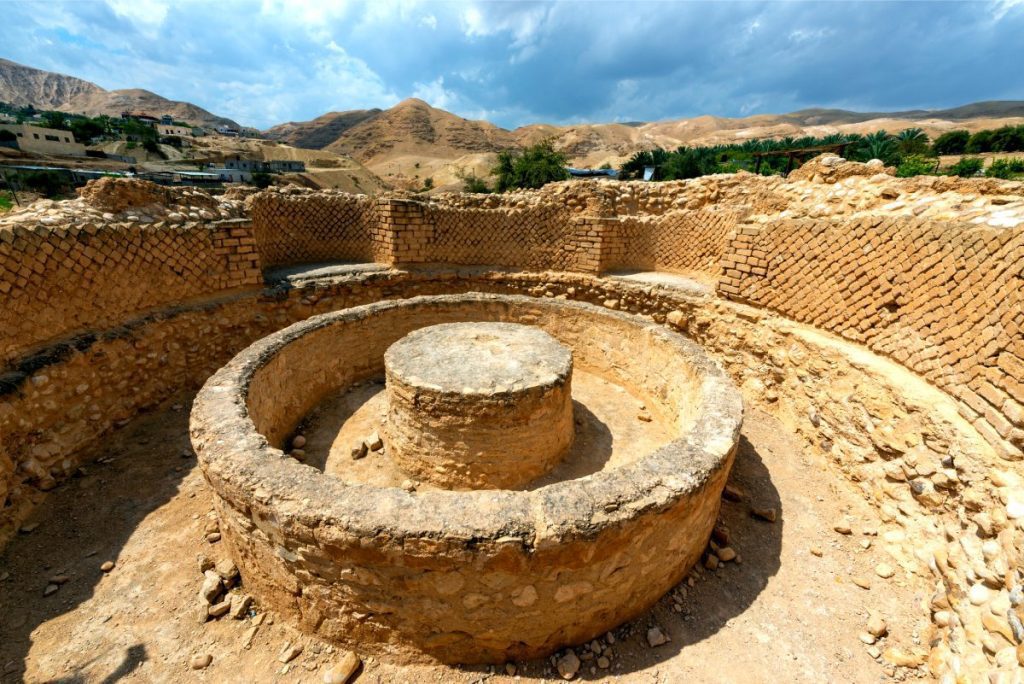
Opus Reticulatum Found in Jericho, Herod’s Winter Palaces
During the long excavations, it was made clear that this is not the city of Jericho. But a complex of winter palaces that were built next to it. Also, it was now understood that the complex was not built in one instance. But was developing over the years. First used by the Hasmonean kings and later by Herod the Great and his descendants. Thanks to the excavation of Kathryn L. Gleason, a garden archaeologist, we now know that lushing gardens were a part of the palaces.







